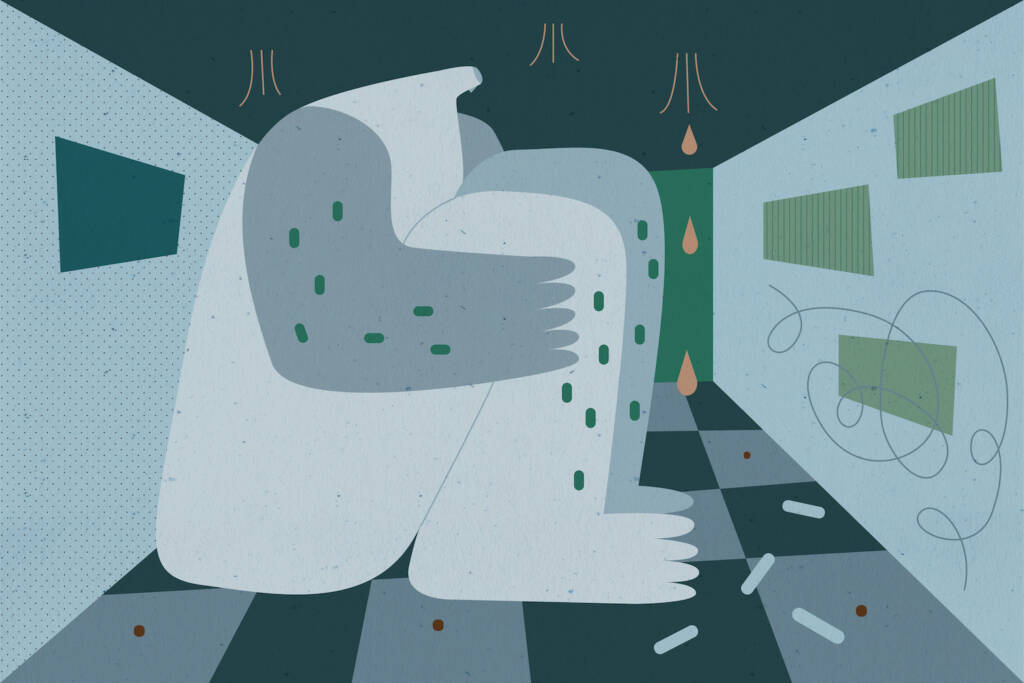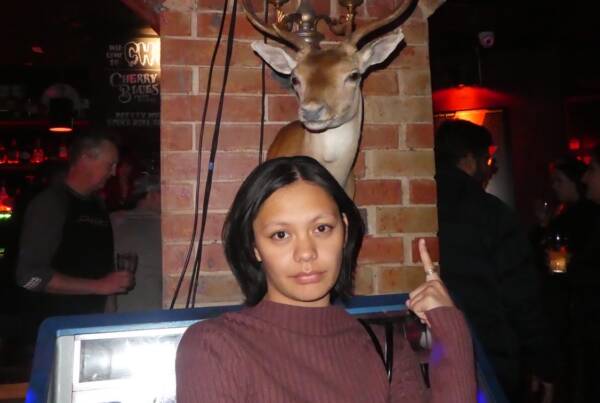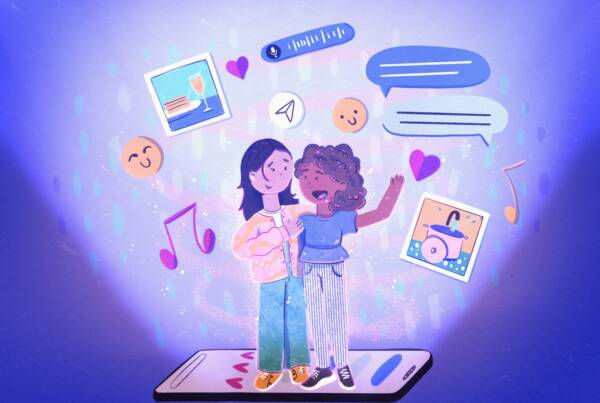Writing by Lynn Robchinsky // illustration by Raina
 “Conceal it, don’t feel it, don’t let it show.” There always seemed to be such sombre gravity to this phrase. At the age of ten, I certainly couldn’t put my finger on it, but in the events of my life that later ensued, I would grow to realise just how provoking it truly is. Anxiety, like a taper arrow, would come to pierce me in the heart, seizing clarity and surrendering judgement. But more than that, it amplified— in a series of cyclical obsessions, compulsions and repetitions. There was no control, no remedy. And this was how it ended, my brain— the cause of all my pain, what a horrific prospect. And I was losing.
“Conceal it, don’t feel it, don’t let it show.” There always seemed to be such sombre gravity to this phrase. At the age of ten, I certainly couldn’t put my finger on it, but in the events of my life that later ensued, I would grow to realise just how provoking it truly is. Anxiety, like a taper arrow, would come to pierce me in the heart, seizing clarity and surrendering judgement. But more than that, it amplified— in a series of cyclical obsessions, compulsions and repetitions. There was no control, no remedy. And this was how it ended, my brain— the cause of all my pain, what a horrific prospect. And I was losing.
But so was she. Elsa, for me, has always been such a beguiling character. I saw more to her than just another archetypal Disney heroine or damsel in distress, I saw familiarity. A character whose flaws replicated my own. The irony being that I’ve always related more to Anna as a character— bubbly, chatty and at-times naive, but it wasn’t until I was faced with my own internal conflict, whereby I grew to develop a new found understanding for Elsa.
Her powers, an inborn gift, deeply misconstrued and misunderstood— quickly transformed into a source of terror. The root of this being the very way in which Elsa’s powers were defined— a curse.
Before, Elsa’s powers were a source of connection, a mutual affinity between her and Anna. It wasn’t until her powers came at the expense of her sister’s life, where the magnitude of her powers were redefined, bringing a far more macabre meaning.
Elsa’s sudden shift in behaviour was a trauma response, the event altered something within her that perpetuated a cycle of shame and guilt. It’s important to consider that Queen Iduna and King Agnarr, Elsa’s parents, were partially responsible for the way in which Elsa perceived her powers. Albeit, I don’t feel it’s necessarily just to place the sole blame on them. They reacted as any reasonable parents would, they worried and contemplated solutions. Their very own demise was due to seeking help elsewhere for Elsa. But their fears grew to adopt and instil a deeply harmful message, hide what you feel, and suppress it— leaving behind this toxic blueprint for Elsa to inherit.
Besides, her parent’s had an image to maintain, another child to raise and a plethora of other worries to fixate on. They loved and cared for Elsa but her powers were seen as an inconvenience.
And Elsa noticed just that. She picked up on the nuances and the petrified expressions. She recognised that her whole world was essentially crumbling before her eyes, as she was ushered into the confines of her four walls and isolated from the outside world. Elsa was only eight-years-old, and when you’re a child all you want to do is run to your parents, have them hold you and tell you that everything will be okay, but Elsa couldn’t do that. Not purely because she was afraid of hurting them, but also because her parents just didn’t understand. So without ever getting to fathom how she was feeling, beyond the fear, they instructed her to stow her powers away like derelict baggage, in the hope that perhaps, it would just disappear. This philosophy emerged as a recurring phrase that would become ingrained within Elsa as she grew older, “Conceal it, don’t feel it, don’t let it show.”
She rehearses it, these words have become second nature. It’s not just a mantra, it’s the way she walks through life. With that, Elsa attempts to comply with normalcy, she puts the needs of her family’s, instead of devoting any effort in understanding the source of her powers. But ultimately, Elsa felt like a pariah—a monster, who deserves nothing but to be locked away, so as to not hurt anyone. She feels completely at fault for something that she never asked for. And worst of all, she was all alone. And so her world grew dimmer and colder.
Much like Elsa I was met with my own internal battle. One with less ice and snow, but equally mentally terrorising. I was riddled with anxiety and worst of all I feared it. I felt I was helpless,
unable to control my mind, the very thing that is supposed to be my safe haven and escape from the tribulations of life. But like a virus, my fear spread, feral and more hideous by each day.
Like a spinning top, my thoughts began spiralling out of control, and when it seemed like the spinning top was losing momentum and the internal chatter grew fainter, that same old familiar noise would come flooding back in. And the spinning top would somehow re-accelerate, seemingly faster than before. Like it was mocking me, dangling the keys of escape before my eyes, but me, a fool— too weak and too unmighty, to fight back and retrieve them. And the fear resumed, penetrating my every thought.
So, I too, disconnected from the world. It began with deactivating my digital presence, slowly I became more closed off and distant. I shut the blinds on my social life thinking that it would salvage me from the shame. But it only ever made me feel more alone. While experiencing my own treacherous period of anxiety, I began noticing a pattern in my behaviour— I would finish a task, realise that it wasn’t done “correctly”, and become anxious because I would need to redo it in fear of the anxiety not subsiding. But the thing is, that the fear never stemmed from inexactly doing something, it traversed from an anxious thought that sought an outlet for temporary relief. The result being that I had grown to condition myself in perpetuating a cycle of fear. I observed a similar pattern in Elsa’s powers and their correlation to her emotions.
What makes her powers so utterly fascinating, is the fact that they are a direct manifestation of her internal emotions. Much like our own anxious thoughts— reflecting the fortitude of the human mind. When she was calm and confident, her powers were abstract and elegant. But when she was engulfed in fear and anxiety, her powers were ghastly and brute, “I’m scared, it’s only getting stronger.” Therefore, her oscillating emotions which are channelled through her powers, serve as symbolic representations, mirroring her state of mind. Illustrating a brilliantly nuanced correlation of her powers with anxiety.
You see, Elsa’s powers weren’t a curse, they were a gift, and the issue dealt with how she perceived and defined those powers. From there, I recognized that as long as I fostered a fearful mentality towards my powers, so-to-speak, and thoughts, I would never be able to reclaim control. Just like Elsa. “Your power will only grow. There is beauty in it. But also great danger. You must learn to control it. Fear will be your enemy.”
The climactic song Let it Go, perfectly encapsulates the catharsis Elsa experiences as she finally learns to accept her powers, relinquishing her resentment, and resistance. From then on, the film takes a pivotal turn, shifting towards Elsa’s journey to reconciliation. I would further argue that the Let it Go sequence is more of a stepping stone in Elsa’s expedition.
The true strife between letting go and holding back can be seen in the reprise of For the First Time in Forever. In this sequence, everything Elsa has been told to bottle up finally implodes within her— rather in a far more candid exposition than in Let it Go. Not only did her worst fear come true, hurting her sister, but she also unloaded the heaviest burden she had been battering with since she was a little girl. And when Elsa injures Anna for the second time, the intensity of the strike did not come from the physical impact, but instead, all the muddy emotions that had culminated from within.
Like a tightly wrapped bandage around a finger that had now come unravelled, Elsa could finally breathe. This is when Elsa truly lets go, ceding all of the pain and trauma she had been taught to suppress. It came out in a raw and unadulterated form— and that is exactly what made this scene so touching and painstakingly realistic. An authentic climax of a dreary struggle with accepting oneself. Elsa’s powers are emblematic of anxiety, an extended metaphor serving to show the parallels between our fear of anxiety and it being a power which we can learn to control. But the way in which we can achieve this freedom of mental captivity is through relinquishing our pent up emotions. This is how we move forward.
In the final act of the film, Elsa realises this very idea— for this she gained equanimity, proving to everyone, but above all— herself, that she was more than just an emblem of fear.
As I experienced my own emotional turmoil, I had come to understand that the only way to move forward was to let go, too. This meant letting my thoughts pass without devoting any attention towards them, it meant staying present in the moment and letting the chatter tire itself out instead of intervening and never feeling apologetic for being myself. Letting go is a deeply onerous process, it is a yearning for inner peace and a return to stability. It is a mental recognition and maturity that change must be put into effect, or fear will assume total control. And it is only through letting go whereby we grasp the necessity for connection, and belonging. “Love will thaw.”
The film concludes with Elsa regaining respect and self-acceptance for herself, at last, healing the long standing agony and torment that she endured— similar to my own journey with anxiety.
Together, we finally learned to let it go.






